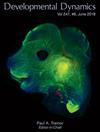Breeding fat-tailed dunnarts (Sminthopsis crassicaudata) in captivity: Revised practices to minimize stress whilst maintaining considerations of wild biology
Abstract
Background
The fat-tailed dunnart is a small dasyurid marsupial which is emerging as a robust laboratory model for conservation, developmental, and reproductive biology research. While these marsupials present extremely valuable models, housing non-domesticated animals in captivity can present a wide range of potential stressors for the animals, which need to be managed to ensure colony health. Notably, dunnarts rely on scent marking for social communication, which is important to maintain to reduce stress in artificial environments.
Results
In this study, we examine captive management techniques and provide updated recommendations which consider both scientific and conservation outcomes. Through ongoing management, we observe that recapitulating aspects of a natural environment has a significant impact on stress reduction and improving the overall reproductive fitness of captive-bred colonies. Moreover, our study provides evidence for preferred cage base substrate types, and quantification of stress caused by the cadence of enclosure cleaning using fecal glucocorticoid metabolite levels as an indicator of stress.
Conclusion
The study underscores the significance of population management in captive breeding programs, advocating for maintaining genetic diversity and meticulous record-keeping. We have further refined best practice for managing captively bred dunnart colonies, outlining guidelines for enclosure requirements, handling, cleaning, feeding, and lighting during breeding. Overall, the research aims to improve the health and productivity of captive fat-tailed dunnarts, ensuring their continued contribution as a valuable laboratory-based marsupial model and aiding in the conservation of related endangered species, while meeting a balance between maintenance of strict hygiene and alignment with wild-life history.





 求助内容:
求助内容: 应助结果提醒方式:
应助结果提醒方式:


